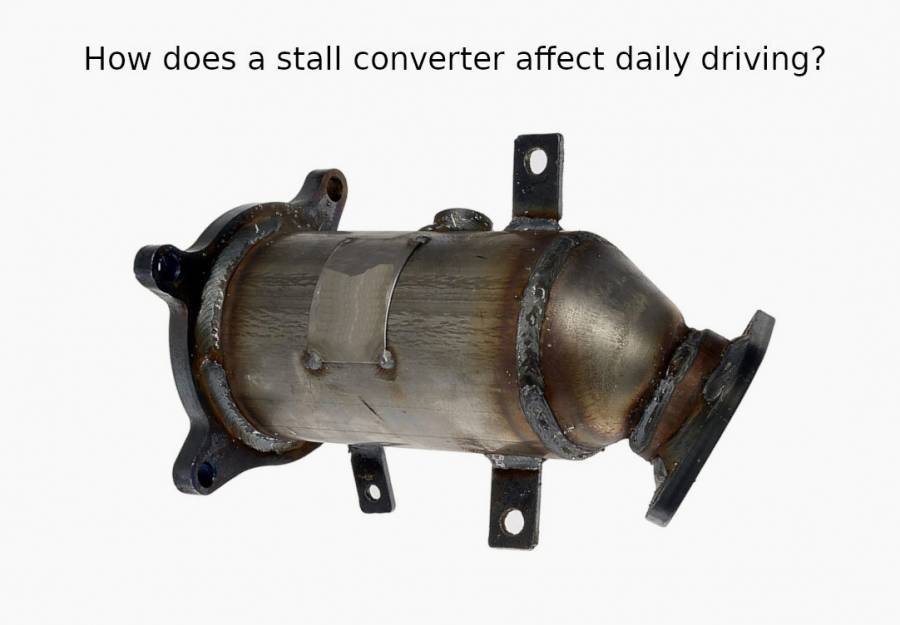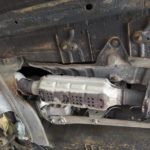Quick Navigation
The basic concept of a stall converter is simple: it allows the engine to reach maximum power before the car starts to move, thus, maximizing the engine’s ability to launch the car from a standstill.
The downside is that it drops the transmission into first gear much harder than expected.
When the vehicle is stopped, it can cause some frame, suspension, and drivetrain jarring.

It is ideal if you are drag racing or even doing a burnout. It can be dangerous and frustrating to merge onto a busy highway or pass someone on a two-lane road.
The higher stall speed also makes it necessary to raise the engine at higher RPM before releasing the clutch.
As with any vehicle, this takes practice and adds a degree of difficulty to driving in stop-and-go traffic.
Not forgetting that a stall converter is not designed for use with manual transmissions. There is a lot more you need to know about this feature.
Read on for all these:
Everything You Need To Know About How A Stall Converter Affects Daily Driving
A stall converter is essentially a clutch that sits between the engine and transmission in your car.
It allows the engine to get up to speed before it engages the transmission, hence the term “stall.”
The stall converter increases the engine’s speed at a given gear-set which helps significantly in acceleration.
But, there are many downsides to having a stall converter:
Hard Shifts With Unprecedented Forward Jerking
Stall converters are very violent and uncomfortable on the street, so nobody should use them in regular cars.
When you take off from a stoplight, you want your transmission to grab quickly and smoothly so your car doesn’t jerk forward.
If you have too high stall speed, the converter won’t grab until the RPMs are too high. It leads to an unpleasant driving experience.
On the other hand, too much rotational energy will come from your engine if you have too low stall speed. It will also cause it to “lug” as well.
Poor Fuel Economy
Most automatic transmissions will lock up the torque converter somewhere between 15 and 30 miles per hour.
The engine and transmission are locked together with no slippage when this happens. The vehicle can now move faster with less fuel consumption.
When a torque converter stalls, it does not allow the engine and transmission to lock up.
It causes increased slippage between the engine and transmission, which leads to a loss of power and poor fuel economy.
Poor Low-Speed Performance
In daily driving situations, stall converters are usually not beneficial. Stall speeds of 2200rpm and higher are not recommended for streetcars.
Anything over 3000rpm is going to be downright miserable for daily driving. As you can imagine, when the car is sitting at an idle, the engine RPMs are very low.
They make your car slower at low speeds and when driving around town.
Your engine will not reach peak power until higher RPMs due to the increased torque multiplication from the stall converter.
If you want to come to a stop smoothly, a stall converter isn’t for you. Because of the increased torque at low speeds, you need to apply more brakes to slow down.
It will help prevent jerking or rolling the car back.
It will also be challenging to pull out of parking spaces because you must rev the engine at higher RPM before providing any power.
The car will bog down from a stop at low RPMs until the engine speed comes up a bit. It can make your car feel sluggish and less responsive.
Failure To Change Gears
A stall converter is not for everyone, as it does not change the gears in your transmission.
A stall converter set too high for your car can cause problems with the transmission shifting into gears properly. It is much more realistic when you floor the gas pedal.
If the transmission doesn’t shift appropriately under high load, it can cause problems with clutches slipping and burning out early.
Or worse, gears breaking off inside the transmission! It will only shift at its point, which may be inconvenient for some drivers.
Noisy Stall Converters
A lot of noise can be heard when pressing on the gas. Also, revving up produces more noise than usual.
It happens because there are no gear changes until ~2000rpm+ or when there is a lockup clutch.

Increased Transmission Wear
A high stall converter can make it challenging to drive smoothly in stop-and-go traffic.
It allows more engine RPMs before engaging the vehicle’s drive train, which causes excessive slippage.
This increased slippage also increases wear on your transmission and your gas mileage.
All this results from the fact that more power is being used to drive your vehicle forward.
Additionally, increasing your Stall Speed will reduce the engine’s overall transmission life span. You will be asking more from it than what it was designed for.
Therefore, timely maintenance will need to reinstate the engine’s original life. It is not only costly but also detrimental to the engine itself.
Decreased Engine Life
The stall speed of the converter is matched to the engine’s torque. If you install a converter with too high of a stall speed, it will likely not lock up when it should.
In addition, the transmission will try to accelerate in 1st gear while locked up.
It isn’t suitable for your engine and transmission because your torque converter is not absorbing power during acceleration as expected.
What To Consider When Selecting A Stall Converter For Your Vehicle
Consider several things if you must install a stall converter for your street car or truck.
Choosing a converter that stalls too high or low can affect drivability and performance.
So be sure you select one that matches your vehicle’s intended use. Here are some things to keep in mind:
Vehicle Weight
A heavier vehicle requires more torque multiplication than a lighter vehicle. The heavier your vehicle is, the more radial load (weight) on each tire.
Therefore, it needs more torque multiplication to get moving.
If you have a 4×4 truck with oversized tires and 33-inch tall tires (or taller), it will require a higher stall speed.
The speed will be more than one with smaller tires and wheels.
Stall Speed
The main factor when buying a stall converter is the stall speed.
A converter’s stall speed is the engine RPM at which the torque converter allows an engine to start rotating the transmission gears.
It can differ depending on whether or not you have an automatic or manual transmission.
Find out your vehicle’s factory stall speed for a manual transmission and add 250-500 RPMs.
It will provide enough RPMs for acceleration without making it too high for everyday driving.
An excellent example of this would be if your car has a 3,000 RPM stall, you should look for a converter with a 2,750-3,000 RPM stall.
As far as an automatic transmission goes, below are some general guidelines:
- 1st gear stall speeds are usually between 1,400 to 1,800 RPMs
- 2nd gear stall speeds range from 1,800 to 2,200 RPMs
- 3rd gear stalls range from 2,200 to 2,600 RPMs
- 4th gear stalls range from 2,600 to 3,000 RPMs
You’ll want to be careful about going beyond 3,000 RPMs because you’ll most likely experience severe transmission damage.
Vehicle Application
Consider how you will use your vehicle (i.e., daily driver vs. weekend hobby car).
A higher stall speed converter might not be appropriate if it is a daily drive in stop-and-go traffic.
It would result in excessive RPMs at highway speeds and poor fuel economy.
Final Thoughts
There is no doubt that you can do many things to improve the performance of your car.
But when it comes to improving your car’s power, there are specific basic requirements that you must fulfill.
Unless every requirement is met based on your car’s model, you might have a hard time handling the stall converter in your car.
As a result, you may miss the stall converter’s main benefit.

Kevin has been hanging around cars and automobile magazines since he knew what a car is. He grew up in his father’s 1995 Mercedes E320 Wagon and Volkwagon Phaeton W12 2004. He rides his first car, a manual 1979 Porche 911SC.
Currently, he owns an Acura Integra GS-R. During his childhood, he showed a keen interest in how things actually work and fix them. This passion transforms into his eternal love for cars and bestows him an ideal position in one of the leading automobile companies; whenever he finds time, he takes out his Acura and opts for the longest possible route to find hidden wholesome pleasure in a road trip.
Want to read some of the articles written by Kevin? Head to our blog section to find out all the articles written by Kevin.






